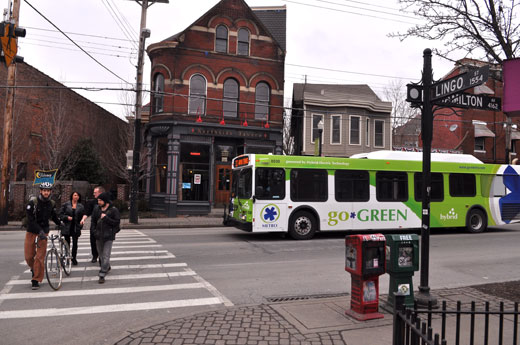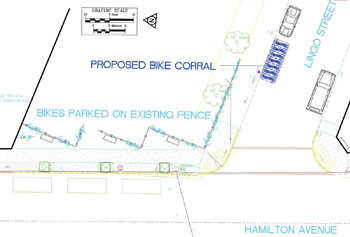Here's a copy of what we're trying to make happen, courtesy of the Chicago Department of Transportation and the Active Transportation Alliance:
Chicago bike safety ordinances (2008)
These ordinances are located in the Municipal Code of Chicago, Title 9: Vehicles, Traffic and Rail Transportation.
Penalties for Bicycle Safety Violations 9-4-025
- This section establishes fines for violating the following proposed ordinances.
- Each violation will be classified as a petty offence with a $150.00 fine, increasing to a $500.00 fine if the motorist violation results in a bicycle crash.
Failure to Exercise Due Care 9-40-160
- Includes bicyclists under the existing ordinance that protects pedestrians from careless driving.
- Brings consistency with a similar Illinois statute. See 625 ILCS 5/11-1003.
- Simplifies procedure for police to issue tickets and for prosecutors to bring charges when bicyclists are struck by motorists.
Turning Left or Right in Front of a Bicyclist 9-16-020 (e), (f)
- Clarifies that motorists must yield to bicyclists when turning left at an intersection, as they would to any other approaching vehicle.
- Prohibits a right turn in front of a bicyclist, similar to the Illinois statute prohibiting a right turn in front of a mass transit bus. See 625 ILCS 5/11-801(c).
Overtaking a Bicyclist at an Unsafe Distance 9-36-010 (c)
- Defines 3 feet as the minimum safe distance for motorists to leave when overtaking any bicycle or person on the roadway.
- Brings consistency with a similar, new Illinois statute. See 625 ILCS 5/11-703 (d).
Opening a Vehicle Door into the Path of a Bicyclist 9-80-035
- Brings consistency with a similar, existing Illinois statute that prohibits opening a vehicle door into moving traffic. See 625 ILCS 5/11-1407.
Driving, Standing or Parking in Bike Lanes or Marked Shared Lanes 9-40-060
- Increases the existing fine for driving, parking or standing in bike lanes (see bottom left) from $100.00 to $150.00, the first increase for this violation since its establishment in 1999.
- Establishes a $150.00 penalty for double parking in a marked shared lane because of the danger to bicyclists.



 The City of Cincinnati will be installing the region's first on-street bicycle parking this April in the bicycle heavy
The City of Cincinnati will be installing the region's first on-street bicycle parking this April in the bicycle heavy 